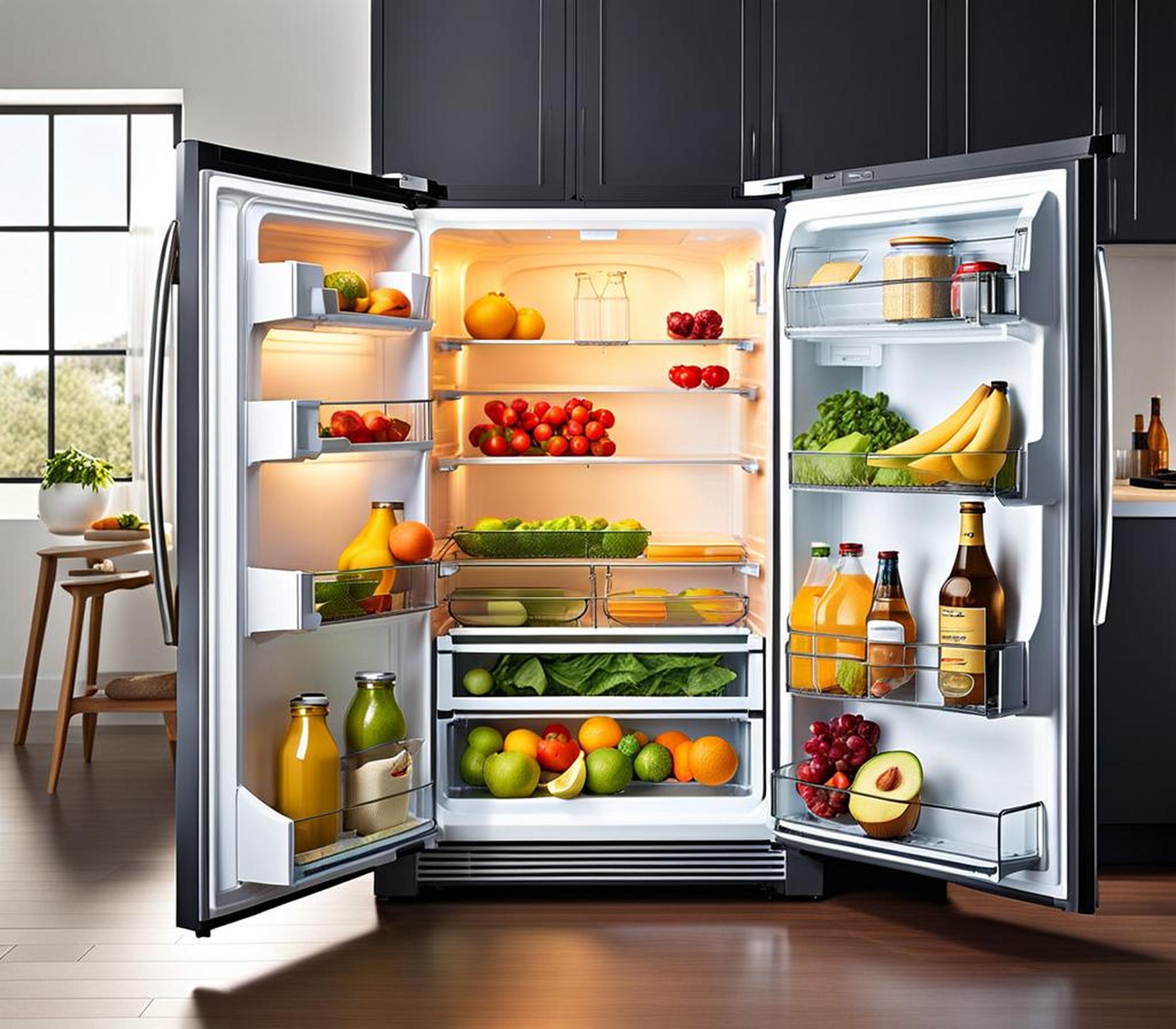When it comes to major appliances, the refrigerator is one that often gets taken for granted. We expect it to run quietly in the background, keeping our food chilled and frozen without much thought given to its electricity usage. But for an appliance that runs 24/7, that power consumption can really add up.
Most of us simply look at the wattage rating printed on the refrigerator’s metal plate and assume that value reflects the actual energy use. However, there are many variables that affect how many watts a refrigerator truly draws. The answer might surprise you!
What Does a Fridge’s Wattage Rating Really Mean?
That specification label located inside the fridge shows its rated peak electricity demand, also called the nameplate wattage. For a standard full-size refrigerator / freezer combo unit, this rating generally falls somewhere between 300 and 900 watts. Mini-fridges, compact college dorm units, and small beverage coolers will show lower wattages around 50 to 150 watts.
| Appliance Type | Typical Wattage Range |
| Full-size refrigerator/freezer | 300-900 watts |
| Compact “dorm” refrigerator | 150-250 watts |
| Mini “cube” refrigerator | 50-125 watts |
The nameplate rating reflects the maximum power draw during the toughest workloads–like fridge startup or recovering from frequent door openings on hot days. But once it reaches optimal temperature, the compressor doesn’t need to run continuously. This makes a fridge’s actual power consumption far lower than its peak wattage rating.
What Impacts a Fridge’s Electricity Usage?
The main components that influence energy use are the compressor and cooling fan motors. But many variables affect how long they need to run on average:

- Thermostat settings
- Ambient temperature and humidity
- Usage patterns like door openings
- Age and mechanical wear issues
- Loading density and contents thermal mass
Modern Energy Star certified refrigerators need the compressor active just 10-30% of runtime. Some newer inverter-driven variable speed models get as low as 5-10%. But aging units with low refrigerant, leaky gaskets, dirty coils, icing issues, and inaccurate thermostats often have compressors on a whopping 80-90%!
Calculating Actual Electricity Consumption
You can derive a fridge’s real-world average watts with simple math. Just take the rated watts multiplied by the percentage of time the compressor runs on a typical day. That runtime percentage depends primarily on the factors above.
For example, a refrigerator rated at 500 watts but with a compressor cycling 30% of the day uses about 150 watts on average (500 watts x 30% runtime = 150 watts). The typical range most modern units actually draw is 100-300 watts. Even large side-by-side fridge/freezers usually won’t exceed 600 watts for daily operation with proper maintenance and settings.
For a more precise calculation, you can find the average watt-hours consumed over a full day. Just multiply the running watts by the number of hours the compressor was active, then divide by 24 hours per day. This shows the typical “average” kilowatt usage that determines your energy costs. Again, assuming that new Energy Star model runs at 300 watts with the compressor on 30% of the time:
300 watts x 7.2 hours per day / 24 hours = 90 watt-hours per day
Key Variables That Influence Fridge Power Draw
Many factors affect the percent runtime for the compressor. Here are several key variables that change how many watts an individual refrigerator consumes:
Refrigerant Charge Issues
Not having enough refrigerant increases compressor runtime to try achieving the setpoint temp. Too much refrigerant causes inefficiency and higher energy use too. Ensuring properly charged lines is critical.
Condenser and Evaporator Coil Condition
Dirty condenser coils prevent proper heat dissipation, forcing longer compressor run times. This also happens if airflow is blocked. Evaporator coils with frost buildup also run less efficiently.
Door Gaskets and Seals
Leaky door seals allow cold air loss and warmer air ingress. This puts extra demand on the compressor. Replacing worn gaskets improves efficiency.
Ice Build Up In Freezer
Excess ice actually acts as insulation, preventing efficient cooling. The recommended maximum ice thickness is 1/4 to 1/2 inch. Defrosting melts excess ice buildup.
Thermostat and Control Accuracy
Inaccurate thermostats cause wider temperature swings, increasing compressor cycling. Older mechanical controls drift over time. New digital thermostats regulate temperatures more precisely for efficiency.
How To Minimize A Fridge’s Power Use
Here are tips to optimize refrigerator energy efficiency to reduce watts:
- Adjust Temperature Settings – Keep temps just cold enough for proper food storage. Each down 1degF increases energy use 5%.
- Clean Condenser Coils Regularly – Dirty coils force longer compressor runtimes to dissipate heat buildup.
- Replace Worn Door Seals – Sagging gaskets allow cold air leakage, making the compressor work harder.
- Upgrade To ENERGY STAR Model – Newer refrigerators include variable speed compressors, better insulation and precise temperature controls for efficiency.
A refrigerator’s wattage rating represents its maximum peak energy draw during demanding conditions, not the actual average usage. Typical units end up running at just 20-40% of rated wattage over a full day. Factors like mechanical wear, usage patterns, settings and ambient conditions all impact compressor runtimes to determine energy consumption.
Following proper maintenance tips optimizes efficiency to minimize electricity usage. But when an aging refrigerator uses far more kilowatt-hours than a comparable new Energy Star model, an upgrade ends up paying for itself in energy savings over time.
